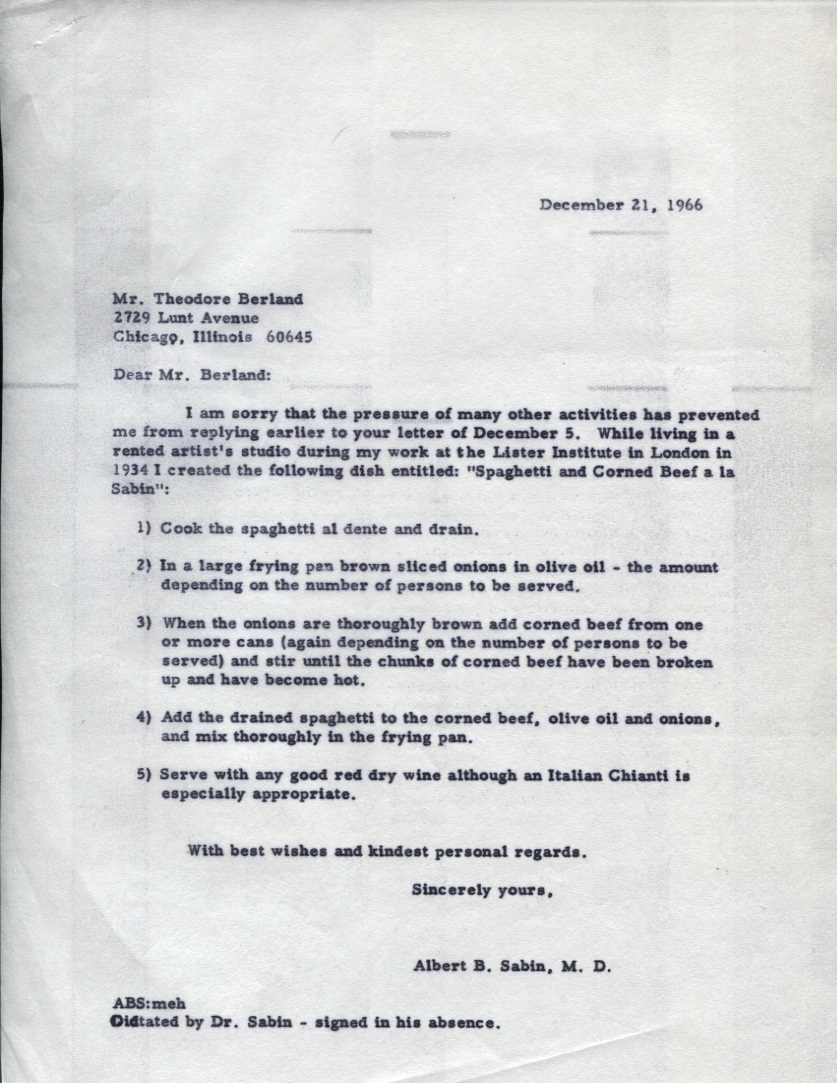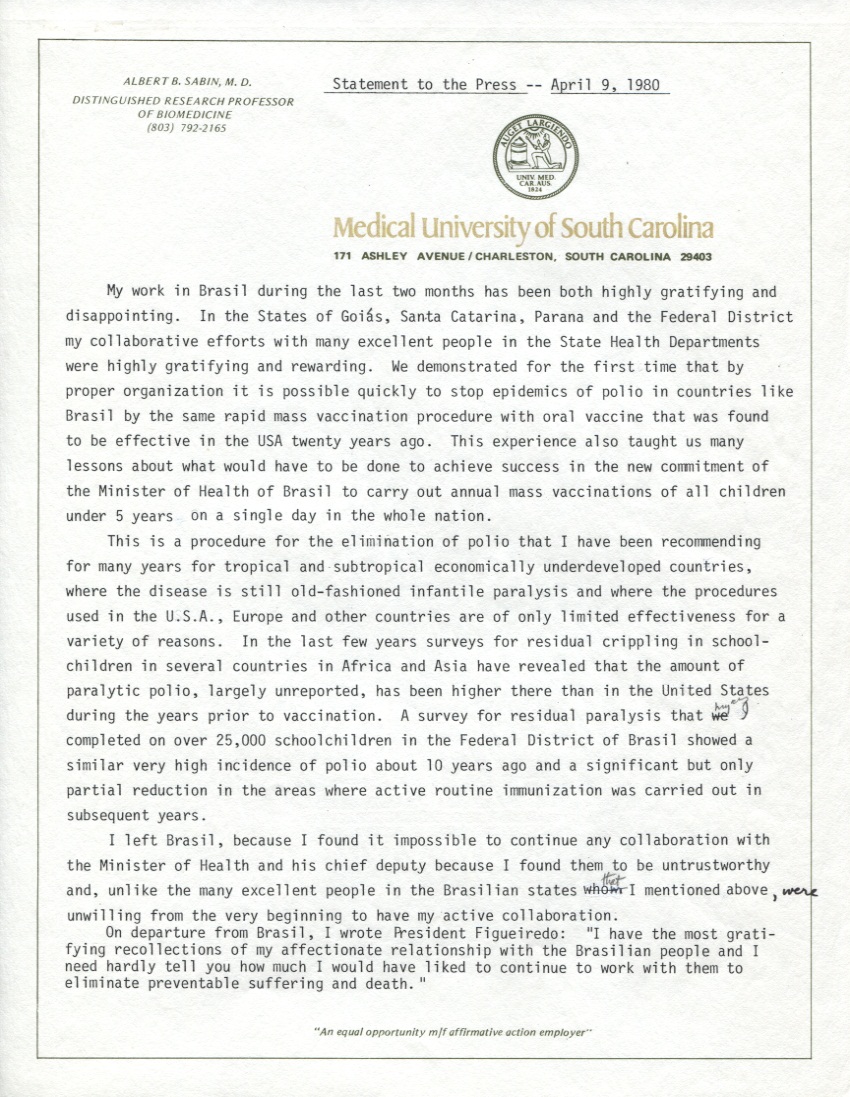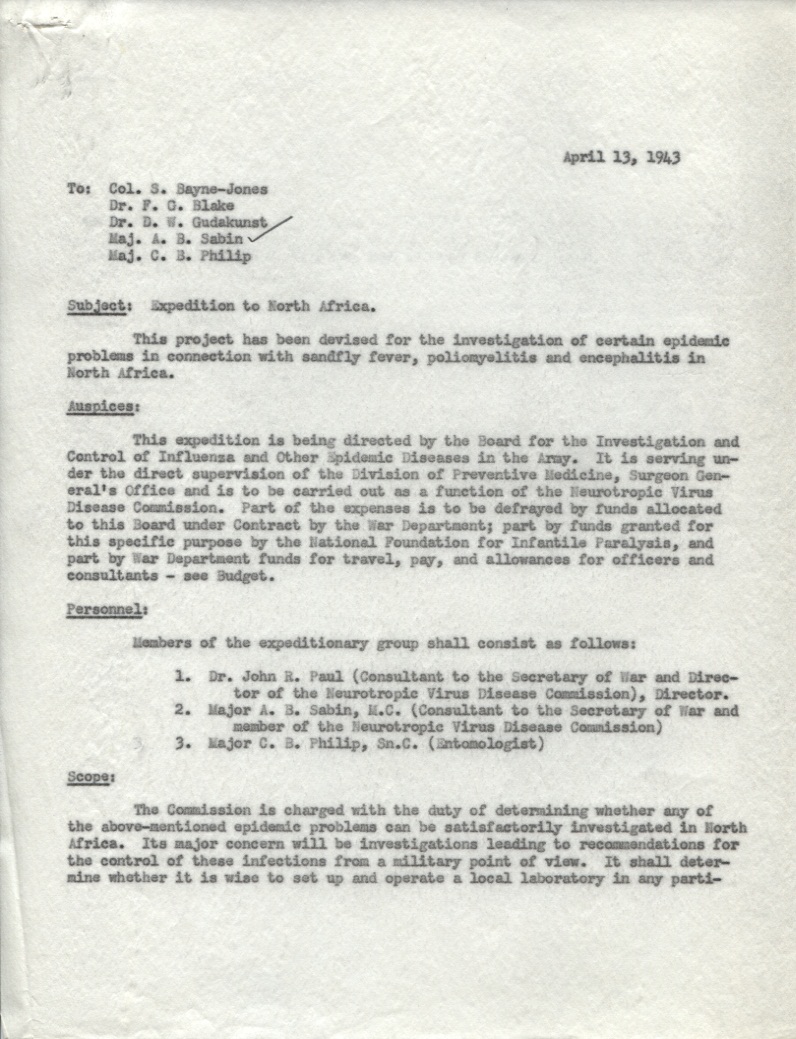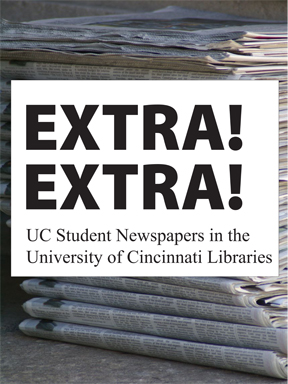By Elizabeth Meyer
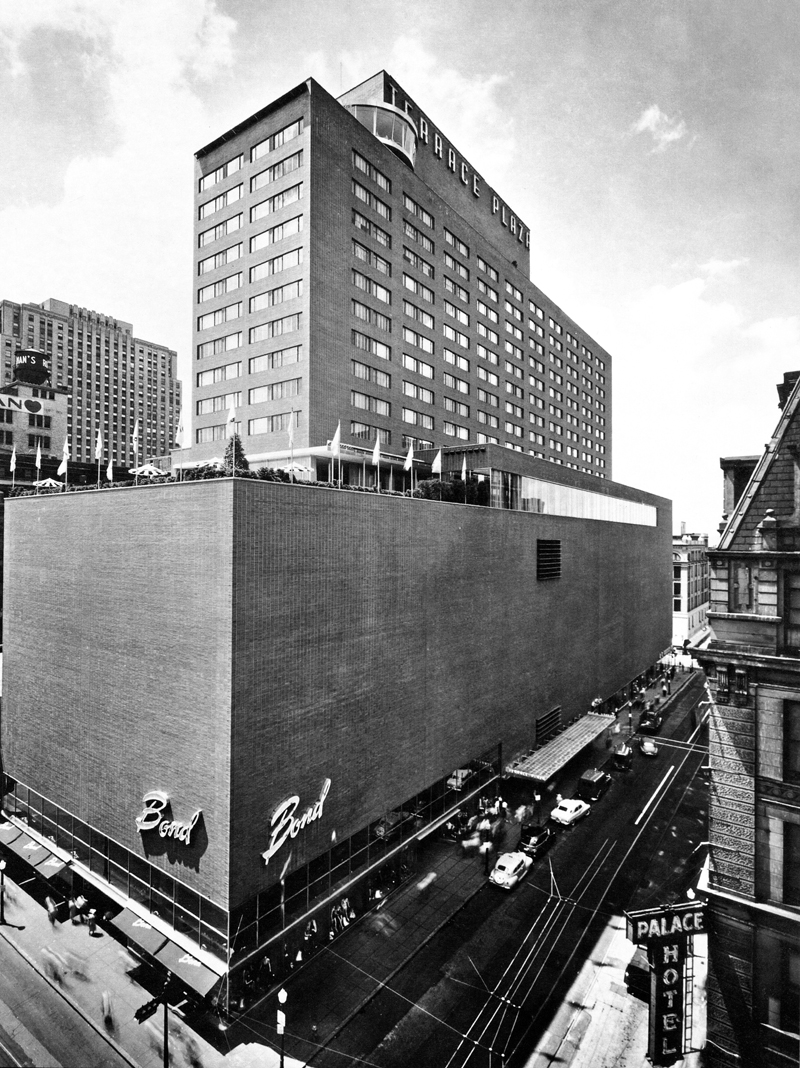 The Terrace Plaza Hotel by Skidmore, Owings, and Merrill is a Modernist masterpiece in Downtown Cincinnati. The exhibit features over 40 photographs of the hotel from its heyday in the 40s and 50s.
The Terrace Plaza Hotel by Skidmore, Owings, and Merrill is a Modernist masterpiece in Downtown Cincinnati. The exhibit features over 40 photographs of the hotel from its heyday in the 40s and 50s.
In addition to photos, architectural plans, letters, newspaper articles, and quotes from those involved in the project, one can also view Rookwood ashtrays, a bottle of Terrace Plaza Kentucky Bourbon, Gourmet Room and Skyline Room menus, other restaurant objects such as spoons, forks, knives, ladles, aperitif glasses, cocktail shakers all adorned with either TPs or rooster logos. Also on view is what is believed to be the only surviving piece of furniture from 1948 –a restored barstool from the cocktail lounge.

